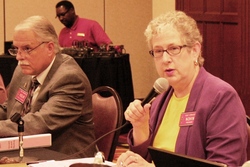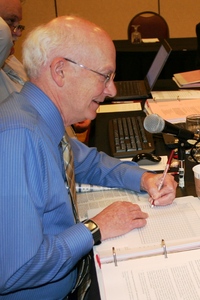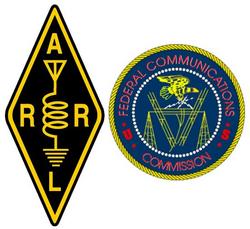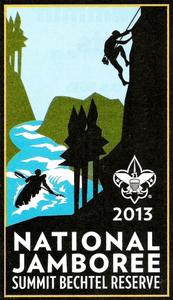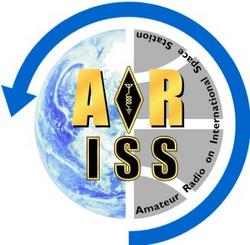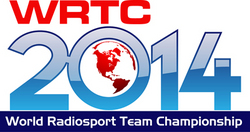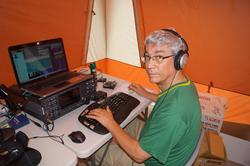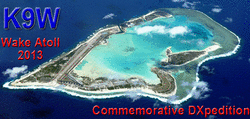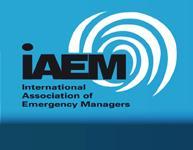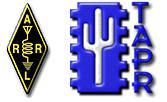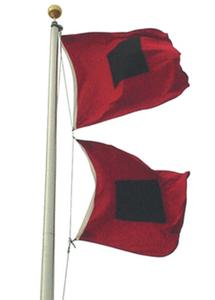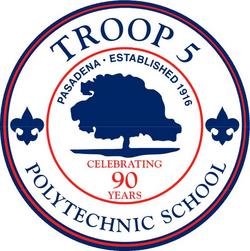 July 25, 2013 John E. Ross, KD8IDJ, Editor
| ||||||||||||||
Your League: ARRL Board Names Award Winners, Okays LoTW Initiatives
At its second meeting of the year, July 19 and 20 in Windsor, Connecticut, the ARRL Board of Directors confronted a broad agenda that included the naming of ARRL award winners, the efforts of the Ad Hoc LoTW (Logbook of The World) and Symbol Rate Rule Modernization committees, creation of a new field appointment for youth, and the procedure for eventual ARRL CEO succession. LoTW ARRL Dakota Division Director Greg Widin, KØGW, reported on the work of the Ad Hoc LoTW Committee. The Board resolved, on Widin's motion, to authorize $75,000 in order to procure outside professional services with the goal of improving LoTW's database implementation. The Board also okayed the hiring of a full-time Headquarters staff member with "strong IT development and architectural skills" to address LoTW improvements. Symbol Rate Rule Modernization On the motion of ARRL West Gulf Division Director Dr David Woolweaver, K5RAV, on behalf of the Ad Hoc Symbol Rate Rule Modernization Committee, the Board directed ARRL General Counsel Chris Imlay, W3KD, to prepare a Petition for Rule Making with the FCC seeking to modify §97.307(f) to delete all references to "symbol rate." The Petition would ask the FCC "to apply to all amateur data emissions below 29.7 MHz the existing bandwidth limit, per §97.303(h), of 2.8 kHz." The committee determined that the current symbol rate restrictions in §97.307(f) "no longer reflect the state of the art of digital telecommunications technology," and that the proposed rule change would "encourage both flexibility and efficiency in the employment of digital emissions by amateur stations." The committee was dissolved with the thanks of the Board. (In his September 2013 QST "It Seems to Us" editorial, ARRL CEO David Sumner, K1ZZ, explains the Board's action on symbol rate regulation.) New Section Level Youth Field Appointment ARRL Rocky Mountain Division Vice Director Dwayne Allen, WY7FD, acting on behalf of Director Brian Mileshosky, N5ZGT, who was unable to attend, presented the report of the Ad Hoc Committee on Youth in the Second Century. A highlight of the report was the proposed creation of a Section Youth Coordinator as a section level appointment in the ARRL Field Organization. The Board subsequently resolved, on Allen's motion, to adopt the committee's recommendation to establish the Section Youth Coordinator (SYC) position, to replace the current Assistant SM for Youth. The Board further resolved to have the Program and Services Committee and ARRL staff define the roles and responsibilities of the SYC, considering the recommendations in the Ad Hoc Committee on Youth in the Second Century's report to the Board. CEO Succession
The Board devoted considerable time and discussion throughout the meeting to the issue of CEO (chief executive officer) succession. While current CEO David Sumner, K1ZZ, has no immediate plans to retire, he is approaching his normal retirement age. That prompted the Board to put in place a procedure for naming a new CEO when the time comes. The Board agreed to establish a CEO Candidate Screening Committee consisting of five directors and elected an initial committee. Among its first responsibilities, the new committee will establish CEO search criteria. The committee may employ an independent management consultant and is to recommend at least three CEO candidates to the Board for consideration at the appropriate time. Award Winners The Board named the winners of two prestigious awards. Dr Robert S. Dixon, W8ERD, of Delaware, Ohio, was awarded the 2013 ARRL Technical Service Award. He was recognized "for numerous technical contributions" to Amateur Radio and for sharing "his abilities and enthusiasm" for Amateur Radio. A QST author, Dixon designed and created one of the first tactical communications bridge systems for his local ARES team. Well-known microwave experimenter Brian D. Justin, WA1ZMS, of Forest, Virginia, is the winner of the ARRL Doug DeMaw, W1FB, Technical Excellence Award. The Board recognized Justin for his "distinguished lifelong Amateur Radio career," which has included expeditions that garnered Justin the first VUCC Award on 47, 76, 122, 145 and 241 GHz. Justin was further commended for developing and building several millimeter-wave stations and for operating several repeaters, from 146 to 1200 MHz. Read more. FCC: Receiver Immunity Standards Unnecessary, Impractical for Amateur Service, ARRL Says Responding to an FCC call for comments based in part on recommendations in a Technological Advisory Council (TAC) white paper, the ARRL this week told the Commission that establishing so-called "harm claim threshold" (HCT) standards for receivers would not work in the Amateur Service. HCTs, expressed in field strength or power flux density, would specify the level of radio interference that receivers should be expected to tolerate before a radio service could claim harmful interference. Limits would be established throughout a service's assigned frequency range as well as within certain frequencies outside that range. The ARRL argued that there is a need for minimum, perhaps even mandatory, receiver performance standards for home electronic devices, but the Amateur Service should not be subject to receiver immunity standards.
"Any performance standards for Amateur receivers would be purely arbitrary, and would compromise the experimental purposes of the Service," the ARRL told the Commission. "Amateurs have the technical knowledge to differentiate between interference from spurious or out-of-band emissions from nearby transmitters and that caused by receiver deficiencies." In the Amateur Service, the League continued, station-to-station interference issues are typically resolved cooperatively without FCC intervention and are "essentially not a problem." The issue for radio amateurs, the League said, is "protection from spurious and out-of-band emissions from other services." Early last year then-FCC Chairman Julius Genachowski tasked the TAC with studying the role of receivers "in ensuring the efficient use of spectrum and to provide recommendations on avoiding obstacles posed by receiver performance to making spectrum available for new services." In late April, the FCC released a Public Notice (ET Docket 13-101), detailing the recommendations of the TAC's working group on receivers and spectrum in a white paper called Interference Limits Policy -- The use of harm claim thresholds to improve the interference tolerance of wireless systems. A General Accountability Office report in February recommended that the FCC "consider small-scale pilot tests and other methods to collect information on the practical effects of various options for improving receiver performance." The FCC accepted comments on both the TAC white paper and the GAO report. The ARRL told the FCC that the HF environment is not conducive to fixed receiver standards and that it would be impossible to establish reasonable HCTs for HF radio equipment. "The most pressing need," the League said, "is for improved immunity of consumer electronic devices and systems. The Commission has had the authority to require this for many years, and has failed repeatedly to exercise it." Read more. Ham Radio in Space: Boy Scout Jamboree Hosts Space Station Ham Radio Contact
European Space Agency Astronaut Luca Parmitano, KF5KDP, aboard the International Space Station spoke July 20 via ham radio with Scouts attending the 2013 Boy Scouts of America National Jamboree, July 15-24, at the Summit Bechtel Reserve in Mount Hope, West Virginia. The Amateur Radio on the International Space Station (ARISS) program arranged the 2 meter contact between the Scouts' K2BSA and NA1SS. "What really matters is to be good at what you do," Parmitano told the Scouts. "So, pick something you like, love it and be really good at it." Parmitano also said that the stars look different -- more natural -- from the ISS but appear the same size as on Earth, as do the planets.
ARISS Technical Mentor Bob Greenberg, W2CYK, coordinated the contact with the Jamboree. Some 40,000 attendees were anticipated at the National Jamboree over its 10 day run. Amateur radio has been a part of the Jamboree experience since 1953, when K6BSA was on the air from Irvine Ranch in California. An ARISS direct contact with Space Station Commander Doug Wheelock, KF5BOC, was a highlight of K2BSA's activities during the BSA's centennial National Jamboree at Fort A.P. Hill, Virginia, in 2010. On July 22, students at Colegio Uruguá, in El Pinar, Uruguay, spoke with the ISS crew via LU8YY. An ARISS contact also was scheduled this with students at the Scuola Italiana di Montevideo in Uruguay. Visitors to the European Space Agency's Space Camp 2013 in Radstadt, Austria, spoke July 24 with the ISS crew via a telebridge between IRØISS and VK4KHZ. The theme of this year's camp is "Space Exploration." Read more. -- ARISS Radiosport: WRTC 2014 Station Test "A Valuable Experience," Organizers Say
World Radiosport Team Championship 2014 (WRTC-2014) organizers say the 2013 station test held during the IARU HF World Championship July 13-14 went very well. The 25-station trial run was the second such test in advance of next summer's international competition in New England. The results of the unofficial competition are on the WRTC-2014 website. "We accomplished our main objectives of exercising our processes around building and operating the stations," said WRTC-2014 Board Vice President Randy Thompson, K5ZD. "We had some more lessons learned around equipment, processes and people. The volunteers did a fantastic job of constructing 25 stations in one day. No one got hurt." The periodic WRTCs run concurrently with the IARU HF World Championship, and the 2014 event will see 65 stations on the air from various New England locations. The goals of the 2013 station test, organizers said, were to expand the pool of experienced teams for station setup, evaluate proposed site locations, confirm logistics and procedures and gather log data under competition conditions. A similar test was conducted in 2012, and organizers say that the just-completed test will be the final one before WRTC-2014 next July. All of the test stations were in Eastern Massachusetts.
The test stations were active on CW and SSB on 80, 40, 20, 15 and 10 meters, and many of them followed the equipment configuration and scoring rules that will be prevail for the actual event. "Conditions were not the best, but these operations will provide valuable log and propagation information to the WRTC 2014 competitors," organizers said. The exercise relied heavily upon more than 100 volunteers, who were able to construct, operate, and take down all 25 stations over the three day test period. "We will need more help for next year with 65 stations to construct," Thompson stressed. "Volunteers can come from anywhere, as long as they can be here for the necessary days -- Thursday, Friday and Sunday." Prospective volunteers can sign up on the WRTC-2014 website. "It will be a fantastic event next year," Thompson predicted. "Just one week before the ARRL National Convention -- a double treat for anyone who can come to New England next July." Read more. DX: Wake Atoll K9W DXpedition Preparations On Track The Wake Atoll 2013 Commemorative DXpedition team reports that preparations for its planned K9W operation this fall are "progressing nicely." Most of the needed equipment is in hand and being checked out before shipment to staging areas in California and Hawaii. The operation will commemorate 98 US civilian contractors -- "The Forgotten 98" -- who died on the atoll during World War II in October 1943. "Our operation, observing the 70th anniversary of their deaths, will be dedicated to keeping their memory alive and honoring their sacrifice," the team said in a recent news release.
A contingent of 12 operators is being assembled with plans to operate five stations over a 14-day period on all modes, 160 through 6 meters. The team anticipates that the operation will start the last week of September or first week of October, depending on the military flight schedule into and out of Wake Atoll. The Wake Atoll DXpedition is the recipient of an ARRL Colvin Award. -- K9W Wake Atoll Management Team People: Hams Win International Association of Emergency Managers Awards Broadband-Hamnet⢠(formerly HSMM-Meshâ¢) firmware, developed by Amateur Radio operators to provide hams with a high-speed digital wireless communication mesh network, has won both US and global awards from the International Association of Emergency Managers (IAEM). The USA Council of the IAEM International Association of Emergency Managers (IAEM) designated Broadband Hamnet as a Division 2 (state/regional national government, international, or nonprofit organization) Technology and Innovation Award winner. It went on to win the IAEM-Global Technology and Innovation Award in the same division. The awards will be presented in October at the IAEM's annual conference in Reno, Nevada. The firmware was the subject of a cover story article in the July 2013 issue of QST, "A Broadband Ham Network Crosses the Finish Line," by Lynn Jelinski, AG4IU. Read more.
The IAEM also named Monte Fronk, KCØWMC, and Randolph Mantooth as co-winners of its 2013 IAEM-USA Public Awareness Award Certificate of Recognition. Fronk and Mantooth were recognized for developing and creating "Strength and Resiliency: Emergency Preparedness for Tribal Leaders," a 30 minute training video designed to educate elected Tribal leaders about disaster preparedness. Mantooth was one of the stars of the 1970s TV program "Emergency," which has been credited with inspiring a generation of firefighters and paramedics. -- Thanks to Broadband-Hamnet webmaster Jim Kinter, K5KTF, and to Steve "Sid" Caesar, NH7C, Chief, Division of Emergency Management, Bureau of Indian Affairs Conferences: Papers Due July 31 for 32nd Digital Communications Conference
Digital communications enthusiasts will be heading to the Pacific Northwest this autumn for the 32nd annual ARRL/TAPR Digital Communications Conference (DCC), September 20-22, at Cedarbrook Lodge near Seattle, Washington. The ARRL/TAPR DCC is an international forum for radio amateurs to meet, publish their work and present new ideas and techniques. Presenters and attendees will have the opportunity to exchange ideas and learn about recent hardware and software advances, theories, experimental results, and practical applications. The DCC is for all levels of technical experience -- not just the expert. Introductory sessions are scheduled throughout the conference to present new technical topics for beginners and experts alike. Amateurs are invited to submit papers for publication in the conference proceedings (you do not have to attend the conference to submit a paper). Send papers by July 31 to Maty Weinberg, KB1EIB, ARRL 225 Main St, Newington, CT 06111, or e-mail to maty@arrl.org. More details and conference reservation information is on the TAPR website (or call 972-671-8277). Public Service: More Than 400 Attend 2013 ARRL Hurricane Webinar Individuals interested in emergency preparedness flocked to the 2013 ARRL Hurricane Webinar, which was held Monday evening, July 15. A total of 410 people, many of them radio amateurs, participated -- the highest attendance ever for an ARRL webinar, administered by ARRL Emergency Preparedness Manager Mike Corey, KI1U.
Attendees heard presentations on a number of topics, including an overview of the 2013 hurricane season forecasts and the role of IRLP/EchoLink in disaster communication by veteran SKYWARN volunteer Rob Macedo, KD1CY; the history and current status of the National Hurricane Center's Amateur Radio station WX4NHC by Julio Ripoll, WD4R; a summary of Hurricane Watch Net activity by Net Manager Bobby Graves, KB5HAV, and the importance of publicizing Amateur Radio communication support by ARRL Media and Public Relations Manager Sean Kutzko, KX9X. Among those registered was FEMA Administrator Craig Fugate, KK4INZ, who posted his attendance on his Twitter feed: "Enjoyed joining other hams for training to prepare for the 2013 Hurricane Season." "It was great to see such a large attendance for this year's hurricane webinar," Corey said. "Given NOAA's Climate Prediction Center's forecast for an above-average season, we all need to maintain a high level of readiness to support our communities. Let's hope it is a quiet and safe one." The 2013 ARRL Hurricane Webinar was recorded and is available for downloading from the ARRL website. Youth: BSA Troop Club Station KT5BSA Achieves DXCC
Boy Scouts of America Troop 5's club station KT5BSA in Pasadena, California, has become a member of the DX Century Club (DXCC), and the Scouts did it the hard way. To achieve their goal, troop members set up portable HF stations at various campouts and Scout events, and all 24 troop members contributed to working the DXCC entities needed to qualify, ARRL Southwestern Division Vice Director Marty Woll, N6VI, explained. Travis Williams, AF6WU, is the club's adviser and KT5BSA trustee. "Travis and his wife, Kjerstin, AF6KJ, have done a fine job with these young hams, providing guidance, encouragement and opportunity to get them active on the air," Woll stated. ARRL Rocky Mountain Division Director Brian Mileshosky, N5ZGT -- an Eagle Scout -- called the club's DXCC "a very neat accomplishment, and one I'm sure all of the boys and leaders involved are proud of." Solar Update Propagation prognosticator Tad Cook, K7RA, in Seattle, reports: At 2330 UTC on July 24, Australia's IPS Radio and Space Weather Services issued a geomagnetic disturbance warning. Increased geomagnetic activity is expected due to a coronal mass ejection (CME). They predict quiet to unsettled conditions on July 25, active to minor storm on July 26, and active conditions on July 27. Over the past reporting week, compared to the previous period (July 11-17) average daily sunspot numbers decreased by less than four points to 73.4, while average daily solar flux declined slightly more than three points to 110.6.
NOAA/USAF predicts Planetary A Index at 5 on July 25, 12 on July 26, 18 on July 27, 8 on July 28, 5 on July 29 through August 8, 8 on August 9-11, 5 on August 12-13, 8 on August 14-15, 5 on August 16-17, 10 on August 18, and 15 on August 19-22. The outlook for solar flux calls for 105 on July 25-27, then 110, 115, 120, 125, 130, 135, 130, 125, 120, 125, 120 and 125 on July 28 through August 8, respectively, 120 on August 9-12, 115 on August 13, and 120 on August 14-17. The latest projection shows a short-term peak at 135 on September 4-5 after a minimum of 100 on August 27-28. In Friday's bulletin we'll review some reports from reports and some thoughts on why AC6T in Santa Barbara may not be experiencing the 6 meter openings others are enjoying. We will also present a number of interesting articles, including this one, about the current solar cycle being the weakest in 100 years. Getting It Right
The news item "CQ World Wide DX Contest Rules Get Complete Rewrite," which appeared in The ARRL Letter for July 11, 2013, contained incorrect information regarding the "Classic Overlay" category for Single Operator, All-Band entrants. The CQ WW rules say that participants opting to use this overlay may operate up to 24 of the 48 hour contest period, with minimum off-times of 60 minutes. If an operator's log shows more than 24 hours of operation, only the first 24 hours of actual operating time will count. Also, "Rookie Overlay" category operators must be licensed less than 3 years before the date of the contest. This Week in Radiosport July 26 -- QRP Fox Hunt July 26 -- NCCC RTTY Sprint July 27-28 -- RSGB IOTA Contest July 27-28 -- US Counties QSO Party July 28 -- New Jersey QSO Party July 28 -- ARS Flight of the Bumblebees Upcoming ARRL Section, State and Division Conventions and Events July 25-27 -- Central States VHF Society Conference, Elk Grove Village, Illinois July 26-27 -- ARRL Oklahoma State Convention, Oklahoma City, Oklahoma August 2-3 -- ARRL Texas State Convention, Austin, Texas August 2-4 -- Pacific Northwest DX Convention, Spokane Valley, Washington August 3 -- Great Lakes Division Convention, Columbus, Ohio August 9-11 -- New Mexico State Convention, Albuquerque, New Mexico August 17 -- ARRL West Virginia State Convention, Weston, West Virginia August 17-18 -- ARRL Alabama State Convention, Huntsville, Alabama August 18 -- ARRL Kansas State Convention, Salina, Kansas August 25 -- ARRL Western Pennsylvania Section Convention, New Kensington, Pennsylvania August 31-September 1 -- North Carolina Section Convention, Shelby, North Carolina September 6-8 -- Southwestern Division Convention (SWHAMCOM), Buellton, California September 14 -- Roanoke Division Convention, Virginia Beach, Virginia September 20-21 -- W9DXCC Convention, Elk Grove Village, Illinois September 27-28 -- SEDCO/W4DXCC Convention, Pigeon Forge, Tennessee September 28 -- North Dakota State Convention, West Fargo, North Dakota September 28 -- Washington State Convention, Spokane Valley, Washington September 29 -- EmComm East Convention, Rochester, New York October 6 -- Maryland State Convention, West Friendship, Maryland
To find a convention or hamfest near you, click here. ARRL -- Your One-Stop Resource for Amateur Radio News and Information Join or Renew Today! ARRL membership includes QST, Amateur Radio's most popular and informative journal, delivered to your mailbox each month. Subscribe to... NCJ -- National Contest Journal. Published bi-monthly, features articles by top contesters, letters, hints, statistics, scores, NA Sprint and QSO Parties. QEX -- A Forum for Communications Experimenters. Published bi-monthly, features technical articles, construction projects, columns and other items of interest to radio amateurs and communications professionals. Free of charge to ARRL members: Subscribe to the ARES E-Letter (monthly public service and emergency communications news), the ARRL Contest Update (bi-weekly contest newsletter), Division and Section news alerts -- and much more! Find us on Facebook. Follow us on Twitter.
| ||||||||||||||
